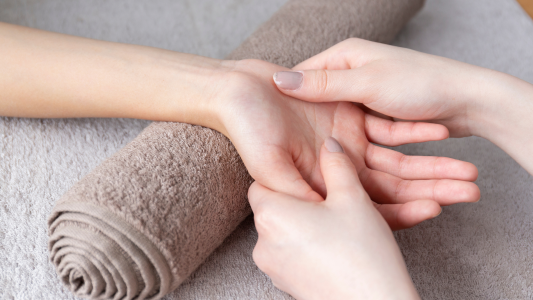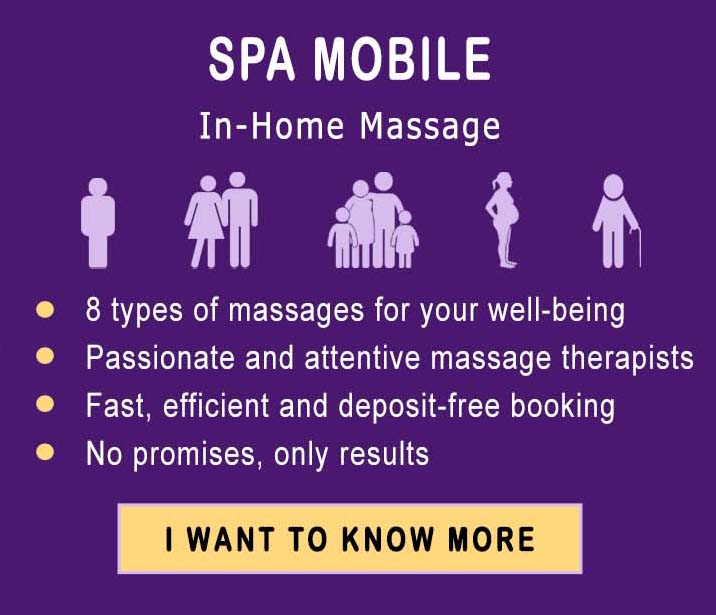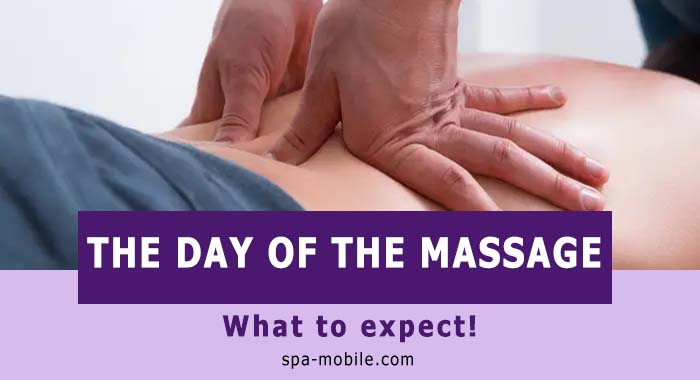Do you suffer from chronic ailments in any area of your body?
Do you have any knots or tension in your muscles?
Are you suffering from tendonitis or an old injury?
How are your arthritis and your level of mobility?
Don’t worry; many people are just like you with their unfortunate physical conditions. Still, if you don’t do anything believing that you will magically heal yourself, you create a deep habit that will make your situation worse and multiply the unwanted effects.
Good news, go for a therapeutic massage at home with Spa Mobile to help you repair your sore and injured body parts and examine and understand the root cause.
But first, can we understand what therapeutic massage is and see if this solution addresses your true intentions?
Therapeutic massage or deep tissue massage?
There are so many types of massage out there that it can get confusing to decide which one is best for you, given your condition.
How can you choose freely and clearly if you are not aware of the differences between therapeutic massage, deep tissue massage, sports massage, and the relaxing massage so popular and so alike?
Therapeutic massage has several names such as restorative massage, medical massage, healing massage or corrective massage. This type of massage helps in rehabilitation, pain and injury management by systematically assessing and treating muscles, tendons, ligaments, and connective tissue in affected areas.
Although often confused with deep tissue massage, curative or medical or therapeutic massage is a more targeted treatment for pain and injury. Our massage therapists who use therapeutic massage need to study longer to fully understand the body’s functioning and the tissues they treat.

A patient assessment exam is essential
While deep tissue massage is a whole-body treatment, therapeutic massage focuses on those parts of the body that require rehabilitation. The therapeutic massage begins with an examination of the muscles, ligaments, tendons and posture. Once the therapist understands your issues causing the injury or pain, they perform a targeted massage of the area.
While deep tissue massage requires firm pressure, the pressure used during a therapeutic massage will vary depending on what is best for you to treat the specific problem. The massage therapist knows very well that the pain in one place can most likely have its cause in another quite different place.
Because of this, they will want to understand your medical history, test your reflexes, range of motion, and get a feel for the muscles that are activated in response to stimuli from surrounding neurons.
The massage therapist will also examine your posture and check for any imbalances you may have when sitting, standing, and how you generally stand. He’ll dig deep enough into these details to determine your best possible path to recovery.
Finally, therapeutic massage is done to treat a specific injury such as the knee, shoulder, or back. This means that you will have several sessions, during which the massage therapist constantly assesses your condition and notes any improvement or deterioration.
Do you suffer from low back pain or chronic back pain?
One of the most common pains is low back pain.
We hear of this chronic evil more and more, with office jobs and IT careers rising. People spend eight or more hours a day sitting. This most commonly affects the large psoas muscle and lower back.
The large psoas muscle is a muscle that sits deep in the abdomen with attachments in the lower lumbar vertebrae. Actions like bringing your knee closer to your chest or flexing your hip strain that muscle. When you sit for long hours, you let this muscle rest in too short a state, pulling on the lower back.
For back pain resulting from office work, therapeutic massage can help restore balance to your muscles and prevent chronic back pain.

Do you experience repeated pain in your body?
Pain is your body’s natural reaction to injury or illness. It’s a warning that something is wrong. When your body heals, you usually stop the pain.
However, when your pain persists long after its root cause has gone away when you feel pain in one part of your body for 3 months or more, then your pain is chronic. This suffering you endure day in and day out could damage your emotional and physical health.
About 25% of people who suffer from repeated pain will suffer from chronic pain. This is how symptoms arise beyond just pain, such as depression and anxiety, which interfere with your daily life.
Chronic pain can be difficult to treat but is not impossible. A mixture of physical treatments and therapeutic massages will help you relieve your pain and understand the process that caused it.

Do you have knots in your muscles?
Muscle knots are small, bump-like areas of muscle that can be painful to the touch. They can grow almost anywhere on the body where muscle or fascia is present.
If you contract, compress, or stretch a muscle with knots, they can be painful and are often called trigger points because they can direct pain to areas further away from the knot. These kinds of trigger points often go unnoticed unless squeezed directly, while active trigger points involve baseline pain patterns with persistent pain, fatigue, and a feeling of numbness.
The type of benefit you can get from therapeutic massage can vary depending on the severity of your muscle knots as well as individual preferences. You can loosen painful knots before getting a massage to reduce the intensity of pain you may feel during the session.
A combination of cold and heat can help reduce inflammation and relieve pain caused by muscle knots. The heat helps relieve pain by relaxing and loosening stiff muscles. Other alternative treatments for muscle knots involve stretching exercises and a break from the activities that caused them.
Muscle knots can cause chronic pain and other health problems when left untreated.

Is your wrist hurting?
If you have pain, numbness and tingling in your hand, thumb, wrist and forearm, difficulty grasping or carrying objects, it could be carpal tunnel syndrome in the inside of your body. Your wrist.
Carpal tunnel syndrome is often associated with long-term repetitive movement or straining, such as working at a computer or assembly line for many consecutive hours. However, genetic factors such as hereditary small carpal tunnel and diabetes and rheumatism can also contribute to the symptoms.
Therapeutic massage therapy for carpal tunnel is the least invasive, cost-effective, and effective long-term treatment for carpal tunnel syndrome. It treats inflammation, pain and numbness by softening and lengthening the muscles and fascia in the neck, shoulder, arm, elbow, forearm, wrist and hand.
Many clients experience carpal tunnel relief after our first session, but it usually takes 4-6 sessions for long-term relief. It depends on the severity and duration of the symptoms.

Are you experiencing muscle fatigue or tension?
Muscle tension after exertion is the term given to a complete or partial tear of muscle fibres, muscle fascia or tendons, therefore essentially anything related to muscle structure.
This is different from a sprain, a tear in the ligaments or joint capsules, which are different types of muscle tissue. It is also different from a stretched muscle which is a muscle spasm.
Very briefly, tendons attach muscles to bones, and a tear is called a strain, while ligaments attach bones to bones, and a tear is called a sprain.
If you have a new stress injury that is a few days old, you need to rest. Anti-inflammatory pain relievers, high-dose fish oil, or curcumin can help control the pain. Ice and compresses can also relieve pain and swelling if present.
It is, therefore, necessary to wait for a little before being treated by a therapeutic massage therapist. At first, we can only help you relax the muscles around the injury, not the injury itself.
After a few days, it is important to seek treatment from an experienced therapist who properly assesses the tension before treating it. If a therapist treats you too aggressively, it can make your injury worse and delay your recovery, not to mention causing you unnecessary pain.

Do you think you have tendonitis or bursitis?
Whether it’s a sore shoulder, knee, or elbow, tendonitis and bursitis are bothersome pains that can affect anyone. The pain may come on gradually, building up over time or feeling sudden and severe.
If you feel concerned or unsure of the cause of the pain, see your doctor. But in many cases, it’s a good idea to get some rest and let your body recover so that it can function better.
Repetitive activities usually cause tendonitis and bursitis. These can include gardening, shovelling, painting, tennis, golf, jogging, or any other activity.
When these conditions occur, a strain on the tendons that connect bone to the muscle (tendonitis) or inflammation in the bursa, which are fluid-filled sacs that reduce friction in the joints (bursitis). ). Since every joint has a bursa, these two conditions often go hand in hand.
Some people think that pain is a sign that something bad is going on in their bodies. But it’s not always the case. Tendinitis and bursitis can cause temporary pain and discomfort, but they usually don’t cause long-term damage and rarely require surgery.
Take tendonitis and bursitis for what they are: overuse injuries common and easily treated with therapeutic massage.

Are you suffering from arthritis or rheumatism?
Chronic osteoarthritis affects millions of Canadians and occurs with age and lack of muscle strain, when wear and tear destroy the cartilage pads between the joints, causing pain and stiffness.
If you have arthritis or rheumatism pain, it can be relieved when the muscles around the joints relax, releasing stiffness and allowing for a better range of motion and mobility.
It is difficult to find good studies on massage therapy for osteoarthritis relief because there have been few controlled studies. It isn’t easy to measure relaxation and well-being, which are subjective effects objectively.
However, some small studies have shown that massage therapy can be effective for various arthritis-related pain. Therapeutic massage will not cure your arthritis or rheumatism but can provide short-term pain relief, improve flexibility, and reduce muscle tension.

What is your level of healing from trauma?
If you’ve been involved in an accident or a fall that caused trauma, getting a massage is one of the best things you can do to begin the healing process.
In addition to decreasing pain and streamlining your recovery, a good therapeutic massage can help alleviate mental trauma and make it easier for you to carry on with your life.
Whether it is an impact, a blow or pain caused by the jarring movement of an accident, hardly any trauma is free from physical discomfort and without massage, this discomfort can linger for months.
On the other hand, if you are seriously injured, therapeutic massage therapy is unnecessary. There is a big difference between being hurt painfully and recovering from a muscle injury.

Choose a unique therapeutic massage with Spa Mobile
Therapeutic massage aims to rebalance your body and remedy your physical pain, injuries or dysfunctions.
It mainly targets your muscles, ligaments, tendons and joints. It affects the position of your bones and, therefore, your posture, because after all, what makes your bones move? Your muscles, don’t you?
We invite you to make an appointment with one of our massage therapists for a therapeutic massage session.





